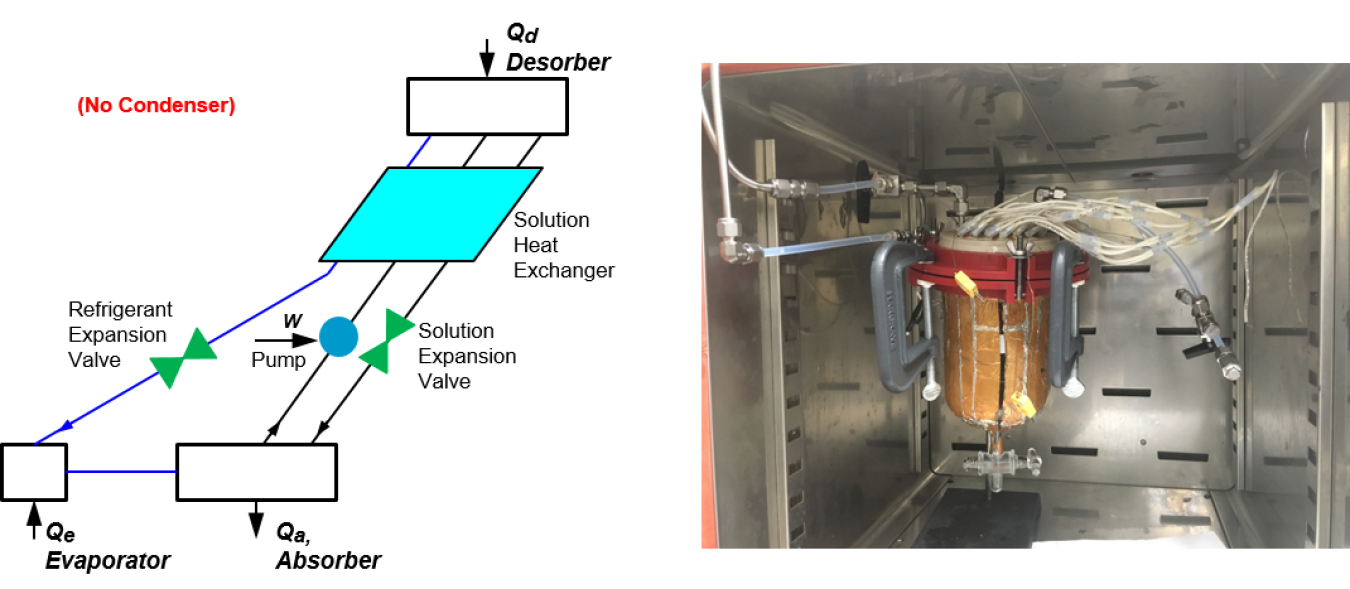
Left: Schematic of thermodynamic cycle of the absorption chiller using the microemulsion/water working pair. Right: Photo of the electrostatic desorber.
Lead Performer: University of Maryland – College Park, MD
DOE Total Funding: $640,000
Cost Share: $160,000
Project Term: June 1, 2019 – May 31, 2022
Funding Type: Funding Opportunity Award, Buildings Energy Efficiency Frontiers & Innovation Technologies (BENEFIT) – 2018
Project Objective
The heat-driven absorption chillers have been available commercially since the late 1950s. The Coefficient of Performance (COP) of single-effect heat-driven absorption chillers, for example, lithium bromide based chillers, has remained ~0.7 since 1950s. Other heat-driven cooling technologies that have been demonstrated include adsorption (solid/vapor) and ejector refrigeration, whose COPs are less than that for the lithium bromide based absorption chillers.
The objective of this proposal is to develop a novel heat-driven absorption chiller, which utilizes the microemulsion absorbent as its working fluid. The researcher team will demonstrate prototype of a single-effect microemulsion-based absorption chiller with a coefficient of performance (COP) of 2.0, which is about 200% higher than the state-of-the-art single-effect absorption or adsorption chillers.
Project Impact
The project aims to push the technology readiness level (TRL) of the microemulsion absorption cooling technology from 3 to 5 and to demonstrate its technical feasibility and commercial viability. The proposed microemulsion chillers offer the potential to enhance the performance of the current absorption/adsorption chillers by up to 200% for the same cooling capacity, which could lead to 0.25 QBtu energy saving upon full commercialization for commercial buildings in U.S. every year.
Contacts
DOE Technology Manager: Antonio Bouza
Lead Performer: Dr. Bao Yang, University of Maryland, College Park

